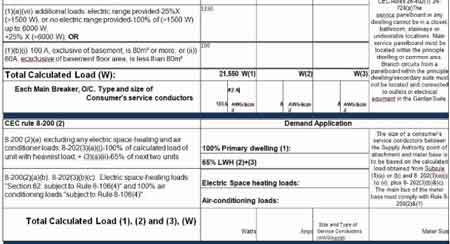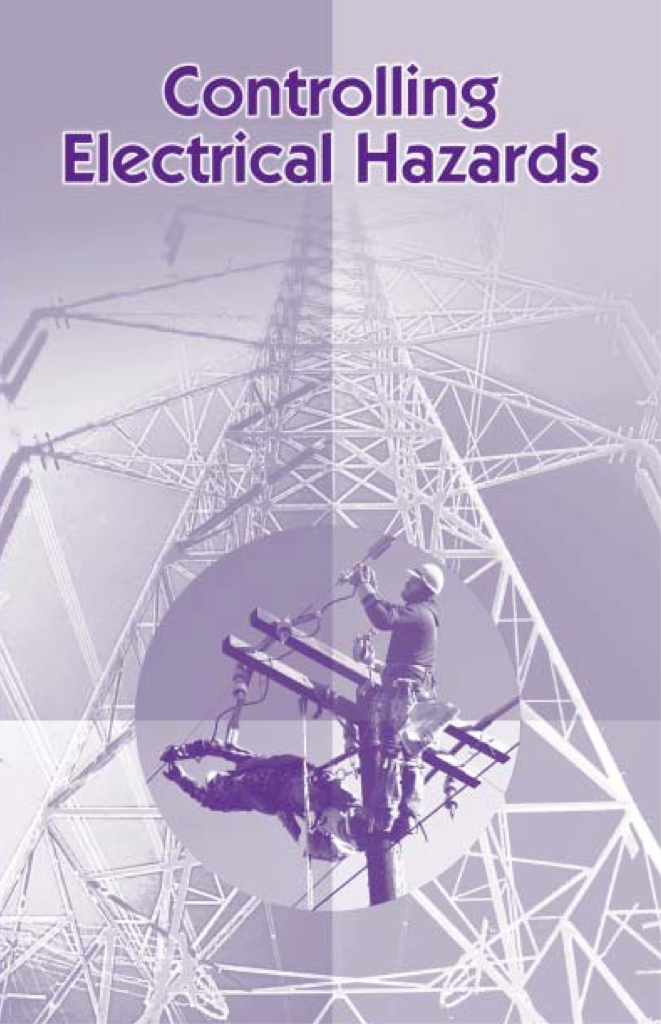Electrical Load Calculator Explained

Arc Flash Analysis/Study
Our customized live online or in‑person group training can be delivered to your staff at your location.

- Live Online
- 12 hours Instructor-led
- Group Training Available
Download Our OSHA 3075 Fact Sheet – Understanding Electrical Hazards in the Workplace

- Learn the effects of electric current on the human body
- Understand OSHA safety standards and protective devices
- Discover essential lockout/tagout and grounding practices
Electrical load calculator estimates power demand, ampacity, and panel capacity, guiding circuit sizing, load balancing, voltage drop checks, and NEC-compliant design for residential, commercial, and industrial electrical projects, planning safely.
Understanding How an Electrical Load Calculator Works
An electrical load calculator is an essential tool for industrial and commercial power professionals. These calculators help determine the total electricity consumption of a facility, playing a crucial role in ensuring safe and efficient system operations. By using one, engineers and technicians can accurately assess the total load to properly size critical equipment like transformers, conductors, and circuit protection devices. This process prevents overloads, minimizes downtime, and supports compliance with safety standards and regulations. Seasoned teams often pair these estimates with insights from the power system engineering discipline to validate planning assumptions.
Residential ones are essential tools for homeowners. They help determine the total amount of electricity your appliances and devices will use, which is crucial for safety and efficiency. By understanding your load, you can ensure your wiring, circuits, and panel are adequately sized to handle the demand. This prevents overloads, which can lead to tripped breakers, damaged appliances, and even fires. Online calculators make this process more accessible, providing a user-friendly way to estimate your home's power needs. Homeowners curious about power factor can explore a phase angle calculator to see how reactive loads influence real power draw.
Appliance-Based Calculation
Every load calculator relies on users inputting the wattage of their appliances to determine the overall load, given the square footage of a home. Think about your kitchen: a refrigerator might use 100-200 watts, a microwave 1000 watts, and a coffee maker 1500 watts. These individual wattages add up! Heating and cooling systems, especially air conditioners, contribute significantly to the load, particularly in warmer climates. Accurately accounting for all appliances, big and small, is key to a reliable calculation.
Sign Up for Electricity Forum’s Electrical Engineering Newsletter
Stay informed with our FREE Electrical Engineering Newsletter — get the latest news, breakthrough technologies, and expert insights, delivered straight to your inbox.
For broader planning beyond appliance lists, engineers often run a load-flow analysis to evaluate feeder loading and voltage drop across distribution circuits.
In industrial and commercial settings, "appliances" refer to a range of equipment, from heavy machinery and HVAC systems to lighting and computer setups. Each piece of equipment has a specific power requirement, often measured in kilowatts (kW). It allows professionals to input the power consumption of each device and factor in aspects like duty cycle and simultaneous operation. This precise calculation helps determine the accurate total load, ensuring the facility’s power system can accommodate all operational needs without risk of overload. These device inputs ultimately roll into the power system analysis and design process for coherent, code-compliant layouts.
Circuit Breaker Sizing
Properly sized circuit breakers are vital for protecting power systems in industrial and commercial facilities. An electrical load calculator can assist in determining the appropriate amperage rating for each breaker, ensuring that it can handle the circuit’s demand without risk of tripping due to overload. By selecting breakers based on load calculations, facilities can prevent unnecessary disruptions and maintain the safe operation of critical equipment. Complementary short-circuit studies using a short-circuit current calculation confirm interrupting ratings and coordination.
NEC Compliance
The NEC outlines comprehensive guidelines for installations in all types of buildings, including industrial and commercial properties. Electrical load calculators are instrumental in meeting NEC standards, as accurate load calculations ensure that selected equipment and wiring meet code requirements. This compliance is essential for both safety and regulatory adherence, preventing hazards and ensuring that systems are designed and installed according to established standards. In many commercial systems, familiarity with the 480V power and current formula streamlines conductor sizing and overcurrent device selection.
The Importance of Professional Expertise
While electrical load calculators offer a helpful estimation of facility needs, they should not replace the experience of a licensed engineer or technician. Online tools provide general estimates, but only a qualified professional can consider site-specific factors, safety regulations, and industry best practices. By combining the output of a calculator with expert judgment, professionals ensure that the design and operation of systems meet the unique demands of industrial and commercial facilities safely and efficiently. Ongoing competency is supported by structured electrical training that keeps practitioners current with codes and analysis techniques.
An electrical load calculator is an invaluable tool for those managing power systems in industrial and commercial environments. By accurately assessing the power requirements, professionals can size equipment properly, prevent overloads, and ensure compliance with codes like the NEC. This contributes to a safer, more reliable infrastructure, ultimately supporting the facility's operational goals and reducing the risk of power disruptions.








